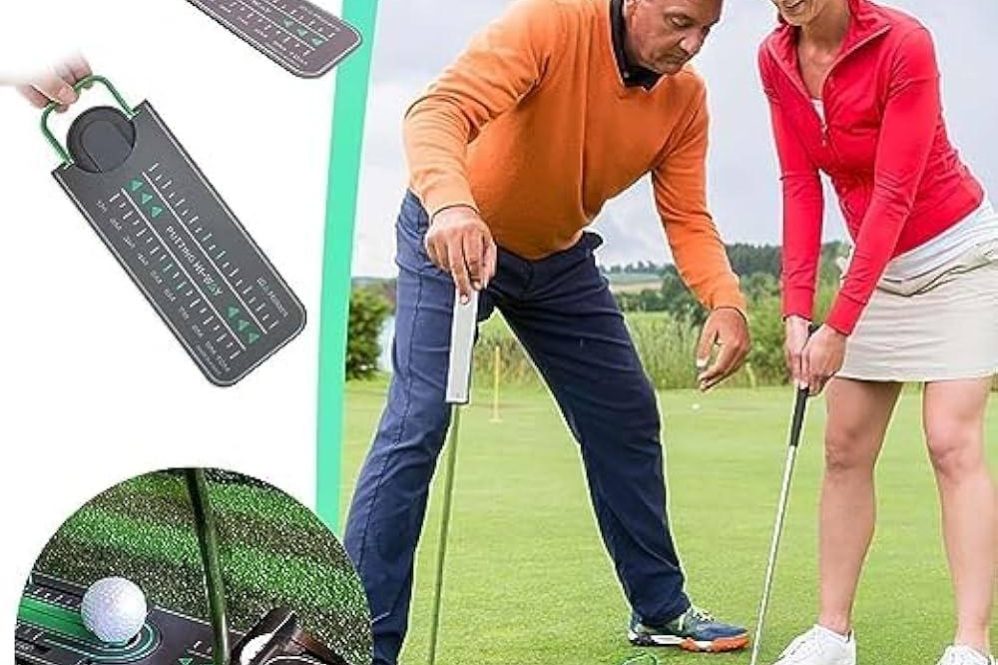Mastering Consistency in Putting: A Comprehensive Analysis of Stroke Mechanics
Achieving precision in putting is a hallmark of golfing excellence, requiring a harmonious blend of technical skill and mental resilience. This article explores the mechanics behind the putting stroke, drawing on extensive research to analyze how grip, stance, and alignment interact. It emphasizes the importance of creating an environment that fosters consistency through visual and sensory cues while addressing the challenges faced during high-pressure situations. By examining these principles, golfers can enhance their short game and overall performance.
The Grip: Building a Solid Foundation
The grip is essential for executing a reliable putting stroke. A balance between firmness and relaxation ensures control throughout the swing. Key grip styles include:
- Interlocking Grip: This popular method intertwines fingers from both hands for enhanced stability.
- Conventional Grip: Here, hands are placed side by side with the left thumb resting on the right hand (for right-handed players), promoting a more relaxed stroke.
- Palm-to-Palm Grip: Ideal for those with larger hands or wrist issues, this grip offers exceptional stability by positioning palms facing each other.
!The Grip: Building a Solid Foundation
Stance: Ensuring Stability and Alignment
A golfer’s stance lays the groundwork for an accurate putting stroke by ensuring balance and proper alignment:
- Foot Positioning: Feet should be shoulder-width apart and parallel to the target line with slightly bent knees to promote stability.
- Body Orientation: Leaning slightly forward towards the target helps align shoulders squarely with both clubface and intended path.
- Weight Distribution: Maintaining even weight across both feet is crucial; however, shifting more weight onto your front foot enhances stability during your swing.
Visual and Sensory Cues
Visual aids significantly contribute to consistent performance in putting:
- Alignment Tools: Using aiming lines on balls or markings on greens can help align putters accurately toward targets.
- Distance Measurement Devices: Laser rangefinders or yardage markers provide precise distance readings that inform swing length decisions.
- Tactile Feedback: The sensation of impact when striking the ball offers critical feedback regarding distance control; golfers can develop sensitivity through practice to improve consistency.
Performing Under Pressure
Maintaining composure under pressure presents one of golf’s greatest challenges. External factors like audience presence or tournament stakes can disrupt focus. To navigate these pressures effectively:
- Breathing Techniques: Controlled breathing exercises help alleviate anxiety while enhancing concentration.
- Visualization Practices: Imagining successful putts in stressful scenarios builds confidence while reducing nervousness.
- Positive Affirmations: Repeating encouraging statements reinforces self-belief against negative thoughts that may surface during tense moments.
Stroke Mechanics: Understanding Movement Dynamics
The mechanics involved in executing a successful putt consist of several interconnected movements—grip, stance, alignment, tempo—all working together harmoniously:
Grip as Control’s Cornerstone
Grip serves as your primary connection to the club; it influences feel during strokes significantly. Various styles exist—conventional grips prioritize stability while allowing pressure application without compromising hold quality.
Stance & Alignment: Directing Accuracy
A stable stance supports effective strokes while proper alignment ensures correct clubface direction throughout execution. Slightly opening one’s stance often promotes straighter strokes by improving visibility along target lines—a small misalignment could lead to missed opportunities on greens!
Tempo & Rhythm: Orchestrating Consistency
Tempo dictates pace within each putt; maintaining smoothness allows better focus upon targets rather than rushing motions which may result erratic outcomes instead! Finding personal rhythm requires experimentation but ultimately leads towards optimal results over time spent practicing diligently!
| Basic Putting Mechanics |
|————————-|
| Grip | Stability & Control |
| Stance | Balance |
| Alignment | Direction |
| Tempo | Consistency |
Enhancing Performance Through Visual Cues
Visual cues play an integral role when striving for consistent puts—aligning faces correctly ensures accuracy regarding direction/distance traveled! Utilizing intermediate targets breaks down longer shots into manageable segments fostering improved concentration levels too! Tactile sensations from grips alongside balanced stances provide valuable feedback aiding posture maintenance/rhythm adherence throughout practice sessions alike!
Table 1: Visual Cues Supporting Putting Consistency
| Cue | Description |
|——————–|——————————————————-|
| Target Alignment | Ensuring face perpendicularity relative target line |
| Intermediate Targets | Segmenting long puts into smaller sections |
| Grip Feedback | Sensing appropriate pressure/control |
| Weight Distribution | Maintaining balanced/stable stances |
Practicing uphill/downhill also sharpens sensory awareness since varying slopes necessitate adjustments concerning alignments/strokes made accordingly! By honing responses toward visual/sensory signals golfers cultivate refined techniques enhancing overall consistency regardless playing conditions encountered!
Conclusion
Mastery over precision putting demands comprehensive understanding surrounding interplay among mechanical aspects alongside psychological factors influencing performance levels achieved consistently under duress experienced regularly within competitive environments alike! Implementing principles outlined herein empowers golfers seeking improvement across short games elevating experiences enjoyed out upon courses everywhere played today!

Mastering the Art of Precision Putting: Unlocking Consistency for Your Short Game
The Mechanics of Effective Putting
To achieve precision in putting, a golfer must focus on the fundamental mechanics. Here’s a breakdown of the key aspects:
Grip Dynamics
A proper grip is essential for consistent performance. Most golfers prefer either the traditional or the claw grip. Here’s how to choose:
- Traditional Grip: Offers a natural feel and control.
- Claw Grip: Reduces wrist movement and increases stability.
Stance Optimization
Your stance should support your putting stroke. Aim for:
- Feet shoulder-width apart for stability.
- Knees slightly flexed to promote balance.
- Weight evenly distributed on both feet.
Alignment Strategies
Proper alignment is crucial for accuracy:
- Align your body with the target line.
- Use markers or your putter to establish a clear line.
- Check your shoulders and feet for consistent alignment.
The Psychological Edge
While technical skills are foundational, psychological factors play a significant role in enhancing putting performance.
Focus and Concentration
Maintaining focus during putting is vital. Here are some techniques:
- Pre-Shot Routine: Develop a consistent routine to create rhythm.
- Meditation: Practicing mindfulness can improve concentration.
Visualization Techniques
Visualization can enhance confidence and performance:
- Visualize the ball’s path before putting.
- Create a mental image of success to boost your confidence.
Confidence Building
Building confidence through practice is key:
- Set achievable goals during practice sessions.
- Reflect on successful putts to reinforce your abilities.
Benefits of Mastering Precision Putting
Enhancing your putting performance can lead to numerous benefits:
- Lower scores on the greens.
- Improved overall game consistency.
- Increased enjoyment of the game.
Practical Tips to Improve Your Putting
Regular Practice Drills
Implementing focused drills can help you hone your skills:
| Drill Name | Purpose | Duration |
|---|---|---|
| Distance Control | Improve feel for various distances | 10 minutes |
| Gate Drill | Enhance accuracy and alignment | 10 minutes |
| Ladder Drill | Work on pressure putts | 10 minutes |
Use Technology to Your Advantage
Modern technology offers many tools for improving your putting:
- Launch Monitors: Analyze your putting stroke and consistency.
- Putting Mats: Practice your stroke indoors.
Case Studies: Success Stories
Many golfers have reported improvements after adopting a structured approach to putting. Here are a few examples:
Case Study 1: Tour Pro Transformation
A well-known professional golfer incorporated psychological techniques into their routine, improving their putting average significantly over a season through consistent mindfulness training.
Case Study 2: Amateur Breakthrough
An amateur golfer utilized drills and technology to lower their handicap from 15 to 10 in less than a year, primarily due to enhanced putting skills.
First-Hand Experience: Tips from the Greens
Reflecting on personal experiences, regular practice and maintaining a positive mindset yielded the best results. Key practices included:
- Keep a journal of putting practice to track progress.
- Regularly play on various greens to adapt to different conditions.




